
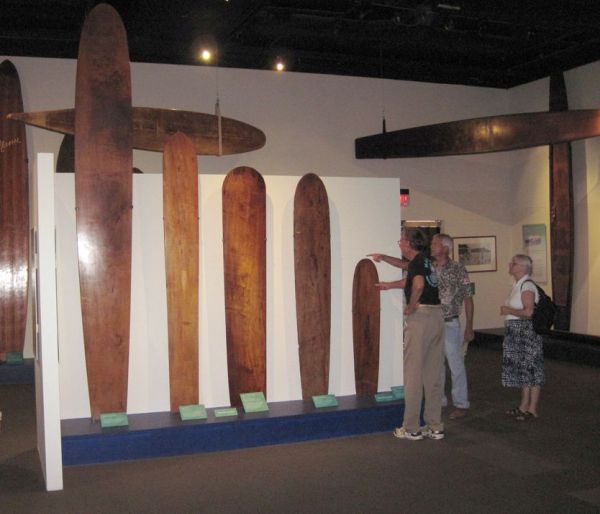
Waves have been ridden around the world for hundreds, if not thousands of years. It was in Hawaii that surfing became integral to local culture, with a level of skill and popularity not evident elsewhere. It was also where the most sophisticated surf-craft developed, as can be seen in the Bishop museum. Different types of surfboards were used, notably the olo and alaia. However, paipo isn't a word that appears in writing before the twentieth century.
This small site aims to bring together hard to find or not well known video or film footage of Hawaiian paipo surfing. Video and photo information are recorded in the credits section in order of display.
 |
 |
While there is some debate regarding the origins of the word paipo, the first known written spelling was in 1956 when Wally Froiseth began producing his 4', twin-finned balsa "Hawaiian Pai Po" boards. John Clark who spoke to Wally Froiseth advised that paipo boards previously were shorter, narrower and thinner.
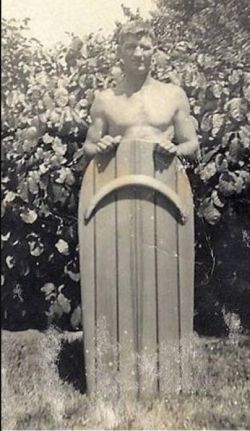 |
 |
Tune into John Clark talking about paipo boards at 17:54 on this video Kaahele Ma Waikiki 'A Tour of Waikiki' a production by Ann Marie Kirk for the Hawaii State Department of Education.
 |
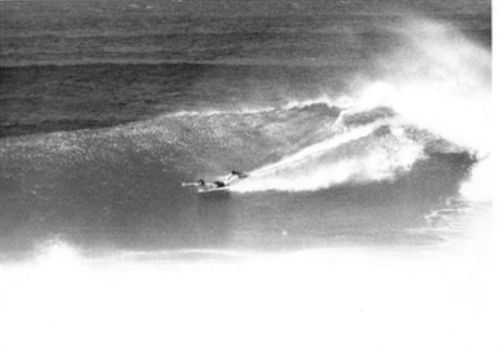 |
Paipo Nui footage Paipo surfing 1958-1965 shot by Val Valentine, collated by John Waidelich
Unidentified paipo surfer Maili Point 1960s
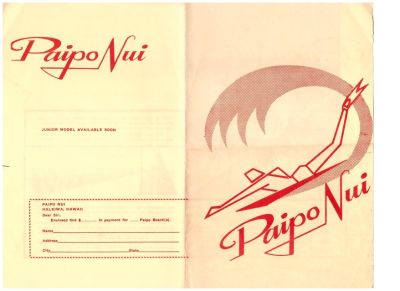 |
 |
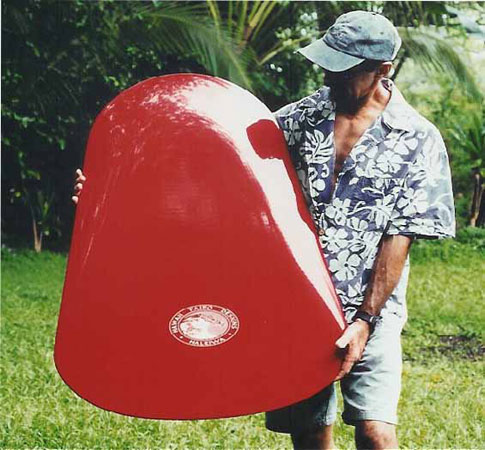 |
 |
Surfers from the 1960s and 1970s recall riding paipo boards when young, making them in woodwork classes or creating boards from materials such as real estate signs. Paipo boards were a frequent sight in Hawaiian waves until the introduction of Tom Morey's boogie board. Makapu'u, Cunhas and the Wall in Waikiki were favourite spots, where they could be seen ridden prone, kneeling or even standing. A good example of these different styles can be found in the Sam George documentary, Hawaiian: The Legend of Eddie Aikau Paipo footage begins at 8:30.
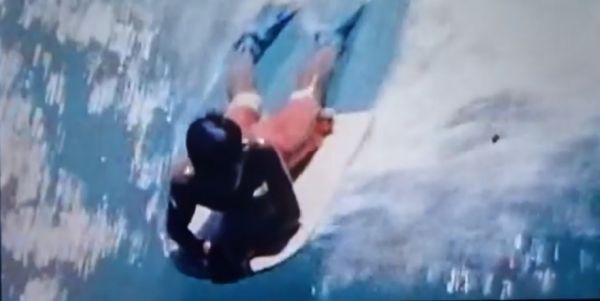 |
 |
It was not just kids who rode paipo boards, Jim Growney recalls he and John Waidelich surfing Steam Lane off Waikiki, while Gerry Lopez in a Patagonia "Talkin Pipe" session includes Sean Ross in his recollection of Pipeline surfers. Big wave spots like Waimea Bay and Makaha, were also ridden by surfers on paipo boards.
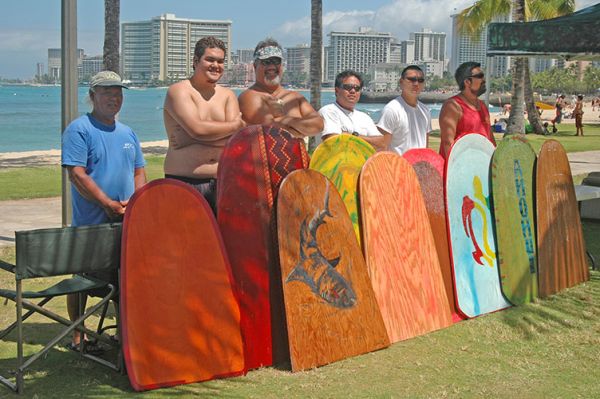 |
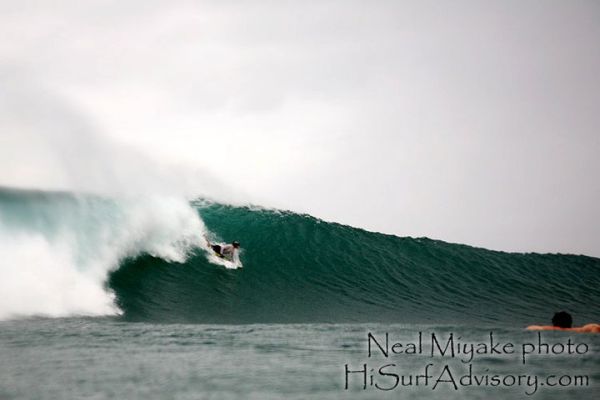 |
| Harry Akisada Harry Akisada footage taken by John Galera |
| Harry Akisada Harry Akisada 2011 footage by Kyle Metcalf. Ride begins at 1:14 |
| Stan Osserman Stan Osserman, then and now includes 60's footage from Wayne Bartlett and compliled by Steve Berg |
| John Galera John Galera and his NoFin wave rider |
| Jarrett Liu Jarrett Liu "malolo" style on his Papa Paepo'o board |
| Valentine Ching and unknown Stand-up paipo at the Wall |
| A tribute to GB (Greg Betz) and Ray Hookano Paipo segue to next dimension |
| Heath Hollenbeck and Nic Jarboe Hawaiian Paipo Design: Paipo Party - Dawn Patrol Session on South Shore Oahu |
| Unidentified paipo boarder on the first wave (only) Waikiki WALLS Party Wave (RAW 4K) |
Today, in the right place paipo board riders can still be found, riding a range of finless boards, from simple flat bottom wood boards to carbon fibre channel bottoms.
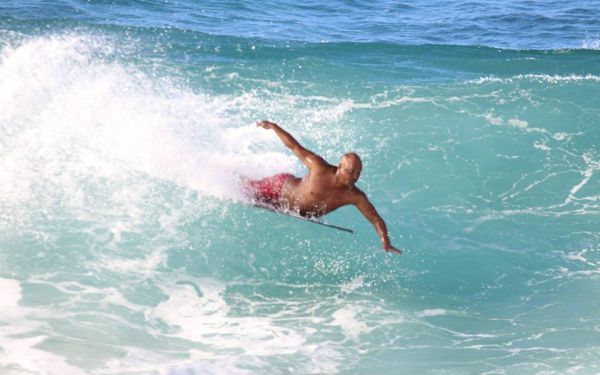 |
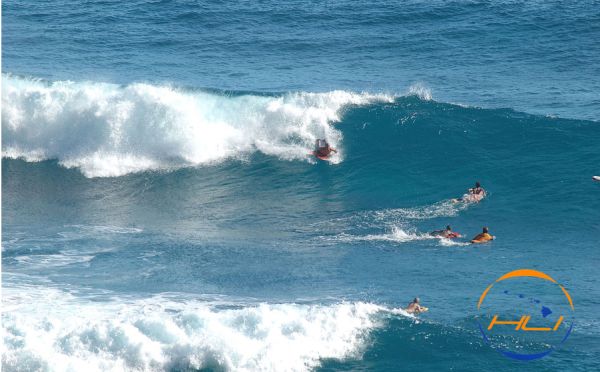 |
Fibreglass finned boards were popularised in California in the late 1960s -1970s with a range of labels featuring the word paipo (Newport Paipo, El Paipo, House of Paipo, Pacific Paipo), but that is another story.
| 1910 prone surfing at Kawa on the Big Island. Photo courtesy of John Clark. The original photograph is part of the Bishop Museum collection |
| Ben and Mila Finney, with John Clark at the Bishop Museum in 2010. The short board in the foreground is estimated to be about 4'. Photo by Bud Scelsa |
| Wally Froiseth with paipo board (4' x 21' in front tapering to 18" at tail, 1.5" thick). Photo courtesy Wally Froiseth and John Clark. |
| Froiseth Pai Po board logo. Photo courtesy Wally Froiseth and John Clark. |
| John Clark has written extensively about Hawaiian beaches and surf history. He is the author of Hawaiian Surfing a description of Hawiian surfing and a dictionary of Hawaiian surfing words. Interview with John Clark |
| Jim Growney and John Waidelich. Interview with Jim Growney |
| Jim Growney at Sunset. Photo courtesy Jim Growney. See MyPaipoBoards: Paipos in the Media. Valentine, Val. (1965, January). It's Smaller, Faster and 300 years Old: The Paipo Board. Surf Guide, 3(1), 17-19. |
| The footage was collated by John Waidelich, Stig Waidelich played the background music |
| The footage of an unknown surfer was included as an "extra" section in the Australian surfing documentary, Bombora. The Story of Australian Surfing, by Peter Clarke, Nick Carroll and Greg Appel. Footage was credited to Don McAlpine and reported to be taken at Maili Point |
| Paipo Nui order form. Courtesy Bob Smith. |
| Interview with Paul Lindbergh and Hawaiian Paipo Designs |
| Sean Ross. Allan 'Bud' McCray photo. Interview with Sean Ross |
| Paipo riders and their boards. Photo courtesy Larry Goddard. Larry Goddard interview |
| John Galera photo by Neal Miyake. John Galera interview interview |
| Jarrett Liu makes and rides his Papa Paepo'o boards, experimenting with different shapes and styles of boards. |
| Stan Osserman. Stan Osserman interviewJohn Clark advised that Stan was riding in one of early Makapuu bodysurfing contests, which included a paipo division. He also noted: "I ran the early Sandy Beach contest for 17 years, and we did the same thing, including a paipo division, and gave the bodysurfers and paipo riders colored caps for judging. |
| Valentine Ching riding stand up at the Wall, replicated decades later. Val Ching was profiled in a Surfers Journal article, "Uncle Val", volume 19#6, pages 38-47. Hydrodynamica is a project of Richard Kenvin, who is also the author of the 2014 book, Surfcraft. Design and the Culture of Board Riding. |
| Youtube video by Ian O'Roarty, features Greg Betz and Ray Hookano. Paipo boards being ridden prone and standing, finned and finless. For more details see Carson, D. and Kenvin, R. (2009/2010, December/January). Deaf Musicians and Silent Dancing: Wave Riding with Richard Kenvin. The Surfer's Path, 75, 40-53. |
| Footage courtesy Hawaiian Paipo Designs Hawaiian Paipo Designs |
| Mark Takamura video which features a paipo boarder on the first ride of the video, the rest is the crowd riding inside on boogie boards |
| Jarrett Liu, photo courtesy Jarrett Liu. Jarrett rides his own PaePo'o boards. Jarrett refers to his style as "malolo" - "use my body weight (Opu) stomach to shift, turn and stabilizing certain part of the board with my weight where I can use freehand style of looking like I'm bodysurfing on a wave. I've learnt to control my body to be only 2/3 from the tail to middle. |
| Harry Akisada at Makapu'u - 2007. Photo from Harry Akisada- Hawaiian Line photography. |
| For general information on paipo boards, see My PaipoBoard website See also for link to forum and more interviews. |
| For historic images of Hawaiian surfing, see Surfing Images : Illustrations, 1788 to 1930 |